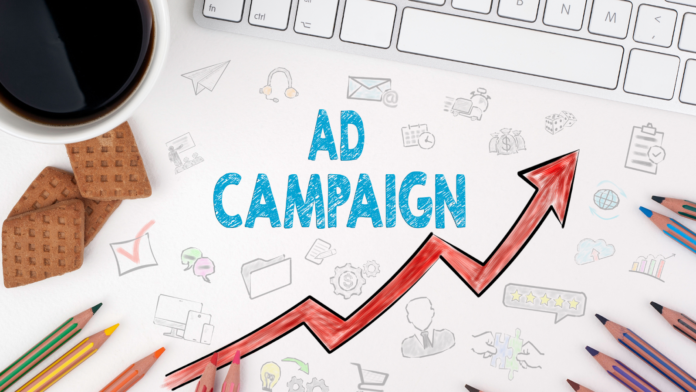Such global brands have in 2025, brought marketing spending to a new level. As competition and digital channels become more competitive than ever before, large, high-budget campaigns are created by some of the world’s largest names to gain attention, facilitate engagement, and establish brand dominance.
Whether it was tourism boards or tech giants, the most expensive marketing campaigns throughout the year have one thing in common, namely, storytelling, data-driven, and enormous global coverage is becoming the new frontier of advertising.
Top 8 Marketing Campaigns 2025 to 2026
1. Tourism Australia – “Come and Say G’Day” (USD 130 Million)
In 2025, the Come and Say G’Day campaign by Tourism Australia found its second stage, and the initiative established its role as one of the most ambitious global tourism campaigns. Comprising long-format films, celebrity ambassadors, and celebrity-specific storytelling in key markets such as the US, UK, China, India, and Japan, the campaign was emotional and culturally oriented.
The campaign supports a 130 million marketing investment (with a total budget of more than 250 million, including government funds), pointing to the fact that destination marketing has become a full-sized movie-telling endeavor.
2. OpenAI – Global Awareness and Product Expansion (USD 2 Billion)
OpenAI also became one of the biggest spenders in the tech marketing arena in 2025. As competition in the field of artificial intelligence is increasingly on the rise, as well as the introduction of new enterprise tools, OpenAI spent the first half of the year alone on sales and marketing to the tune of 2 billion dollars.
The campaigns of the company include digital and enterprise outreach, and brand partnerships and make AI not only a technology, but a daily usefulness to individuals and businesses around the globe..
3. Shein & Temu – The E-Commerce Advertising War
The competitors of fast-fashion and e-commerce, Shein and Temu, kept their marketing conflict in 2025 but switched direction to Europe, Latin America, and the Asia-Pacific. Investments in advertisements increased by more than 35-40 percent in markets such as the UK and France by both companies, with the help of influencer marketing, heavy discounting, and outdoor advertising that is visible.
Their campaigns reveal that global e-commerce powerhouses are resorting to scale, speed, and digital performance marketing to struggle in overcrowded markets.
4. Amazon – The $31 Billion Marketing Machine
Amazon cannot be left out of the list of high-spending marketers. In the year 2025, the retail and technology giant spent an amount that was estimated to be 31 billion in marketing across the world- the highest ad budget in the world.
In the marketing of the Prime video releases and Alexa devices, cloud services, and e-commerce festivals, the Amazon advertising engine is driving almost all business functions. Its magnitude alone reveals how marketing has turned out to be an essential pillar of operational functions instead of support functions.
5. L’Oréal – Beauty Meets Digital Innovation (USD 14 Billion)
L’Oreal, which is a beauty giant, remained the leader in the cosmetics and skincare category, and its advertising amounted to an estimated 14 billion worldwide. The marketing strategies of 2025 of the brand focused on the AR-powered digital try-ons, brand partnerships, and robust influencer programs on Instagram, TikTok, and YouTube.
The campaigns of L’Oreal are the right combination of technology, customization, and emotional narration, so they established new standards of digital beauty marketing.
6. Procter & Gamble – Purpose-Driven Storytelling (USD 10 Billion)
Procter and Gamble (P&G) continued to be among the largest advertisers in the world, having spent approximately 10 billion in its portfolio. In the example of emotional storytelling in such household brands as Ariel and Pampers, as well as performance-based promotions of Gillette and Head & Shoulders, the investments of P&G indicate that the company is still eager to focus on purpose-driven marketing and data-supported reach.
7. Samsung – Product Launch Powerhouse (USD 9.7 Billion)
Having a steady flow of worldwide releases, such as new Galaxy gadgets and smart home systems, Samsung invested nearly 10 billion dollars in advertising in the year 2025. Its campaigns were more immersive, using celebrity ambassadors and brand activations in the real world — much like how PPMS helps brands execute large-scale in-store activations and retail merchandising across India with measurable on-ground impact.
8. Unilever – The Power of Sustainable Branding (USD 8 Billion)
Unilever further made continued investments in sustainability-driven stories by using campaigns to showcase the environmental and social causes. It’s an 8 billion marketing investment with brands such as Dove, Surf Excel, and Lifebuoy and its investment in linking ethical purpose with its daily products is an interest that has continued to move younger generation audiences.
The Common Thread: Bigger Budgets, Smarter Storytelling
What defines “expensive” in 2025 is not just how much brands spend, but how strategically they spend it.
The Biggest Campaigns Are:
- Global in Scale, Yet Locally Tailored : content customized for each culture and market.
- Data-Driven and AI-Assisted : using predictive analytics to guide every ad placement.
- Emotionally Intelligent : focusing on storytelling that builds long-term loyalty, not just impressions.
As digital platforms become more crowded and consumers more selective, brands are realizing that impact requires investment — in creativity, data, and technology alike.
Conclusion
The most expensive marketing campaigns of 2025 are a mere reminder of a simple fact: marketing is not a cost center anymore; it is an investment in cultural relevance. Be it a $130 million tourism initiative or a $2 billion technology investment, the brands that are progressing the current marketing landscape are not merely going large, but they are creating emotional and technological frontiers for the next generation of consumers.

